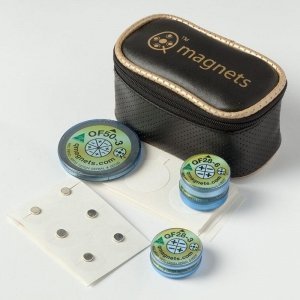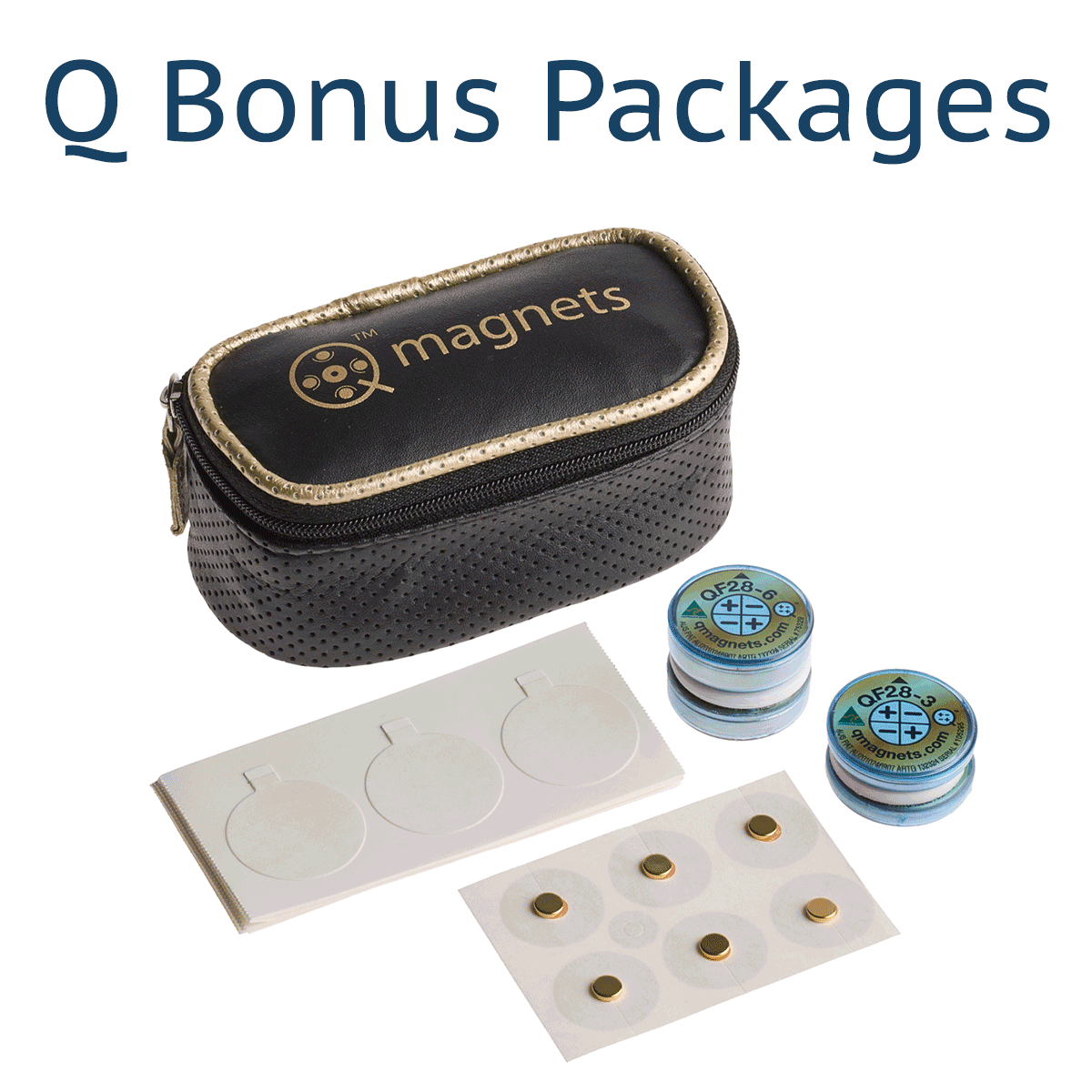Hamstring strains are one of the athlete’s worst nightmares. A typical hamstring strain can sideline an athlete for 2-4 weeks and even up to 3-6 months. In addition the pain and fear avoidance of using the muscle can prevent even modest training during rehabilitation. Fast recovery is the goal!
The hamstring comprises four muscles, with the origin at the ischial tuberosity (pelvis) and insertion at the knee. There are also five tendons joining muscle and bone.
A hamstring strain can occur anywhere along these muscles and tendons and often at the muscular tendenous junction. Typical treatment might include rest, ice, electrotherapy, stretches, manual therapy and advice to prevent recurrence. For an in-depth review of hamstring strains, see this physiotherapy site.

NOTE: When using Q Magnets as an adjunctive therapy for a minor hamstring strain (or any minor sprain or strain for that matter), do not deviate from your prescribed treatment, simply use the magnets in addition. Also, if you are finding significant relief, do not cease your recommended treatment, but continue with it for the rehabilitation period.
What Should I Expect?
The feedback from many athletes is typically less pain and a smoother recovery. So you can return to your sport and/or work activities sooner.
Where to Place Your Q Magnet(s)?
It’s vital to locate the precise area of the tear. You may require medical advice to determine the exact point, but you can always palpate the area. The location of the strain will be painful with a noticeable thickening of the tissue. Place the Q Magnet directly over the injured tissue, so the Quadrapolar magnetic field envelopes the target tissue, i.e. the injury site.
Which Q Magnet do I Use?
Not only does the magnet need to be placed directly over the tear, it’s important to use a large enough device so that the field captures the entire target tissue. The minimum sized device we would recommend is the QF28-3 (covers 28mm or 1″ diameter) and for larger tears, use the OF50-3 (covers 50mm or 2″).
When to Apply?
For best results, apply the Q Magnet immediately after the injury or as soon as possible.
How Long do I Leave it on?
The action of Q Magnets for injury recovery is that of a subtle and sustained effect. So for best results, it’s important to leave them on 24/7 for the duration of the injury. It’s safe to apply ice right over the top, but if you are receiving other therapies such as low level laser (LLLT), simply remove the Q Magnet for the treatment and reapply right after. In fact there appears to be a positive synergistic effect when combining Q Magnets with LLLT.
In using static magnetic field therapy, there are 7 variables and it’s not just a matter of slapping on a common bipolar magnet. By using the most appropriate device with an optimised field, with the right treatment protocol, you will most likely to experience the health benefits and get back to your favourite activities sooner.
What’s the Evidence?
Published Study:
A published study investigated the effects of a static magnetic field on an induced tendon injury in dogs. Histological evaluation after 30 days showed that the active group had reduced inflammatory cells and increased blood vessel proliferation and collagen formation over the control. The dogs treated with the active magnet were also able to weight bear sooner, see reference here.
Case Study:
Hamstring strains for Australian Rules Footballers are not uncommon due to their extended kicking action at speed. Simon Black is one of the game’s all-time greats and during the final round in 2009, sustained a Grade I hamstring strain. He was always in doubt for the first finals game in just 7 days. Black produced a match winning, best on ground performance the following week, just 7 days later. Simon said he taped his Q Magnets directly over the strain immediately after the game and didn’t remove it for the entire week following the steps above.
In an unscripted and unpaid interview, here is what Simon Black had to say about his personal experience with Q Magnets:
See Simon in action here… http://youtu.be/SwdCAIcbPhM
See here for another case of a Grade III calf strain.
The following 4 minute video provides a series of case studies by motocross rider Steve Sommerfeld. Motocross riders provide a lot of material for case studies and in a period of just over a year gave us a large corked thigh, broken ankles, back pain and a dislocated elbow. See how Steve used Q Magnets to provide pain relief and speed up the recovery process so he could back on the bike sooner:
For more information, see how Q Magnets work and how they produce a therapeutic field to penetrate deep enough to treat low back pain. With your Q Magnets on hand, they can then be used for conditions such as lower back pain, minor plantar surface foot pain and minor shin soreness among others.
For more information:
- See how Q Magnets work.
- How they produce a therapeutic field to penetrate deep enough to treat low back pain.
- See here for how to apply your Q Magnets.
- See here for an in-depth review of hamstring strains including a home stretching prevention program.







